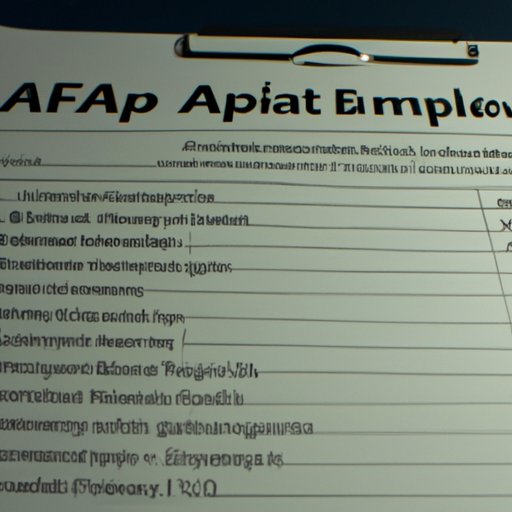Introduction
A financial statement is a formal document that outlines an organization’s financial activities. It gives stakeholders an overview of the company’s financial performance and helps them make informed decisions. As such, it is important for financial statements to be accurate and up-to-date. This article will explore how to put together a financial statement, including different types of financial statements, important terminology and concepts, an overview of the process, steps involved in assembling a statement, common mistakes to avoid, and tips on how to accurately record financial information.

Different Types of Financial Statements
There are three main types of financial statements: the balance sheet, the income statement, and the cash flow statement. The balance sheet is a snapshot of a company’s assets, liabilities, and equity at a specific point in time. It provides a summary of the company’s financial position. The income statement shows a company’s revenues and expenses over a period of time. It reveals the company’s profitability. Finally, the cash flow statement tracks the movement of cash into and out of the business. It indicates the sources and uses of cash.
Important Terminology and Concepts
When preparing a financial statement, it is important to understand key terms and concepts. Assets are resources owned by a company and have value. Liabilities are debts or obligations owed by a company. Equity is the difference between assets and liabilities. Revenues are inflows of money earned from providing goods or services. Expenses are outflows of money incurred in running a business.
Overview of Process for Putting Together a Financial Statement
The process of assembling a financial statement involves gathering financial information, analyzing the information, reconciling accounts, and preparing reports. Gathering financial information involves collecting and organizing data from various sources. Analyzing the information involves verifying the accuracy of the data and ensuring compliance with generally accepted accounting principles (GAAP). Reconciling accounts means checking that the balances in the ledgers match the actual amounts held in the bank. Finally, preparing reports involves compiling the financial information into a format that can be easily understood.

Steps Involved in Assembling a Financial Statement
To assemble a financial statement, there are several steps that must be taken. First, establish accounting policies and procedures. These should include guidelines for recording transactions, preparing financial statements, and maintaining financial records. Next, identify sources of data. This includes documents such as invoices, receipts, and bank statements. Then, record transactions in journals. Journals are ledgers where transactions are recorded chronologically. After that, post entries to ledgers. Ledgers are detailed accounts of each transaction. Finally, prepare financial statements. This includes the balance sheet, income statement, and cash flow statement.
Common Mistakes to Avoid When Creating a Financial Statement
When putting together a financial statement, there are some common mistakes to avoid. One mistake is failing to follow generally accepted accounting principles. Another mistake is not documenting transactions, which can lead to inaccurate financial statements. Omitting or misstating information is another potential error. Finally, be sure to double-check calculations to ensure accuracy.
Tips on How to Accurately Record Financial Information
Accurate record keeping is essential when putting together a financial statement. To ensure accuracy, double-check all entries. Review documents carefully to make sure they are complete and accurate. Utilize technology solutions for automation, such as accounting software, to reduce the risk of errors. Finally, hire a professional accountant if necessary.

Resources Available to Help with Constructing Financial Statements
There are many resources available to help with constructing a financial statement. Professional accountants can provide advice and guidance on the best practices for preparing financial statements. Accounting software can automate the process of recording transactions and generating financial reports. Online tutorials can also provide step-by-step instructions on how to create a financial statement.
Conclusion
Creating a financial statement requires careful planning and attention to detail. Understanding different types of financial statements, important terminology and concepts, and the overall process for putting together a statement is essential. Additionally, it is important to be aware of common mistakes to avoid and tips for accurate record keeping. Fortunately, there are numerous resources available to help with constructing financial statements.
(Note: Is this article not meeting your expectations? Do you have knowledge or insights to share? Unlock new opportunities and expand your reach by joining our authors team. Click Registration to join us and share your expertise with our readers.)
